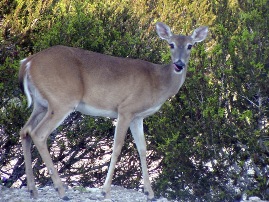Interactions
The Pacific Yew is an important food source for foraging animals such as white tail deer, elk and moose. This tree is foraged heavily in the fall, winter and spring but especially heavily in the winter when other forage is under snow. For example, during the winter, moose are able to eat the available forage that the Pacific Yew offers but also are able to strip the bark from the tree. Nearby rabbits and other small herbivores also utilize the Pacific Yew as a food source. The fruit that is produced by the tree is fed on by the ring-tailed cat and songbirds such as Townsend’s solitaire, the varied rush and the hermit thrush. After consuming the fruit, these birds spread the seeds through their waste which aids the tree in dispersion.
Shelter:
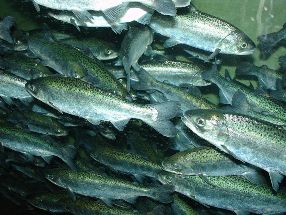
Taxus brevifolia not only offers a food source to animals but a source of shelter as well. In the winter, many moose make use of Pacific Yew stands as their habitat. Throughout the year, the dense sub canopy that the tree offers is used as hiding places and thermal cover by many animals. Foraging woodpeckers are also known to use Pacific Yew snags. In places where the tree branches hang over streams or waterways, it helps to maintain cool water temperatures for salmonids such as Chinook salmon, rainbow trout and whitefish and for other fish who are born in fresh water, move to the sea and then return to the fresh water to spawn.
Insect Damage:
Though the Pacific Yew is a pretty hardy tree, there are several insects that can cause damage to it. These insects include the Fletcher scale, Comstock mealybug, Dysmicoccus wistariae, the grape mealybug, budworm and the Asiatic beetle.
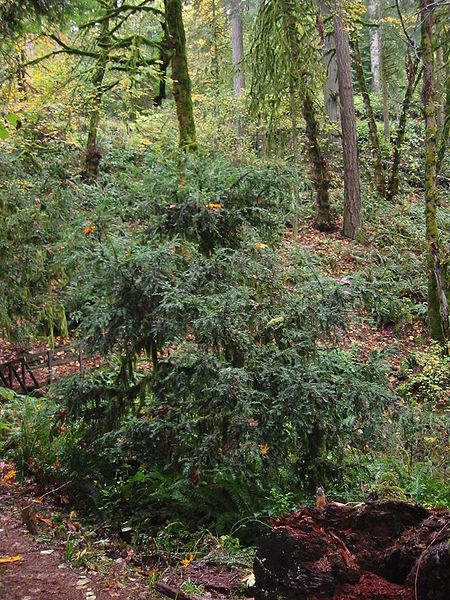
Infections or Diseases:
There are several different blights and diseases that have damaging effects on Taxus brevifolia. Twig blights include those caused by P. hystrella and Physalopspora gregaria. There are also different snow blights that affect the tree such as Neopeckia coulteri and Herpotrichia juniper. Root diseases are also a problem. There are two different root diseases that harm the Pacific Yew and they are Armillaria ostoyae and Phaelous schweinitzii. Finally, there are four different needle blights that effect Taxus brevifolia and they are Macrophoma taxi, Mycosphaerella taxi, Phoma hysterella and Sphaerulina taxi. To this day, there are no serious leaf diseases that have been reported.
Environmental Interactions:
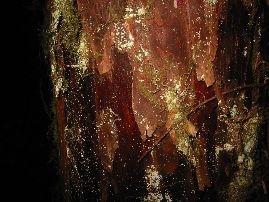
One major environmental cause of concern for the Pacific Yew is fire. As we’ve seen on the Habitat page, this tree isn’t even found in areas that are known for frequent fires. Because of the tree’s thin bark, it’s very sensitive to heat damage. When a Pacific Yew tree does survive a fire, more than not, it’s because it’s located in a wetter environment where the fire doesn’t have as much of an effect. Years after a fire does occur though, the tree can reoccupy that area through bird-dispersed seeds.
Human Interactions:
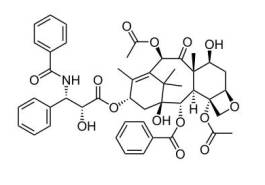
Though the Pacific Yew is not particularly used for its wood, there have been, and still are a few major uses. It has been used for things such as archery bows, canoe paddles, tool handles, gunstocks, boat decking and furniture. The Japanese have used the wood for ceremonial “Toko” poles, which they place next to the entrances of their homes. The fact that this tree is resistance to decay makes it suitable for fence posts. There are also various uses that Native Americans had for the Pacific Yew. Perhaps the most important use of Taxus brevifolia today is the synthesis of the drug Taxol. The anticancer drug is made from a compound extracted from the bark of the tree. This drug is used for the treatment of cancers such as ovarian cancer, metastatic melanoma and some types of leukemia. Taxol also seems to inhibit the replication of Trypanosoma cruzi and Trichomonas vaginalis.
For more details on the drug Taxol, check out the Medical Uses page.
